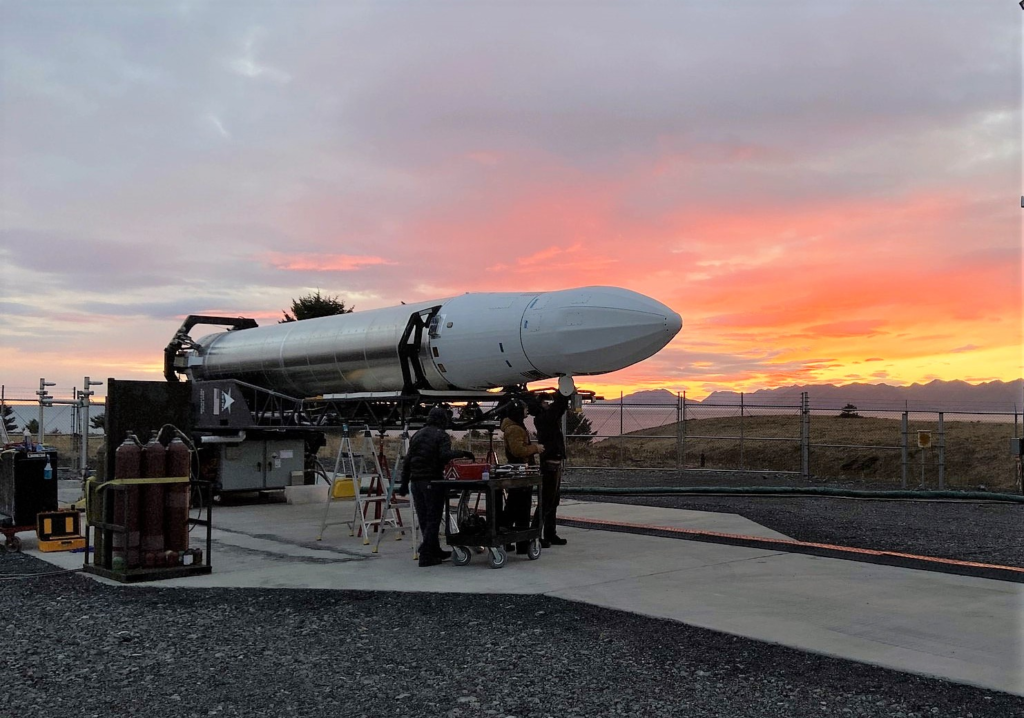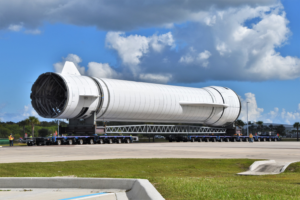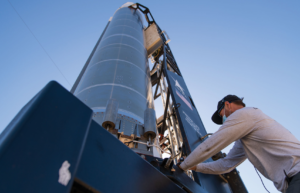
What Is Astra Space’s Plan Going Forward?
The recent cancellation of Astra’s Rocket 3 line was quite a big deal for the company. In total, Rocket 3 had two successful launches, and 5 failed, with the most recent being the loss of the TROPICS satellites with NASA. As of right now, the company has no launch vehicle, or ability to access space, a combination that is concerning for a dedicated launch provider.
In the time since the most recent failed mission, Astra has been continuing to sign contracts with different companies surrounding spacecraft engines and hardware. For example, just yesterday, Astra announced a contract with Maxar to supply engines for their LEO spacecraft platforms. This process has become a somewhat common theme with Astra as the company shifts some attention to spacecraft hardware.
In terms of launching the new Rocket 4 line/Launch System 2.0, it’s unclear exactly what progress has been made and when they intend to launch this upgraded rocket for the first time. All of which are important factors when looking at the future of the company. Here I will go more in-depth into some of the new spacecraft hardware contracts, the future of Rocket 4.0, what to expect, and more.
New Spacecraft Contracts

Yesterday Astra tweeted saying, “Astra announces a contract with @Maxar to supply Astra Spacecraft Engines to be used in Maxar’s proliferated LEO spacecraft platforms.” Specifically, the company announced that it has reached an agreement with Maxar Technologies to supply Astra Spacecraft Engines. The propulsion systems will be used in Maxar’s proliferated low Earth orbit (LEO) spacecrafts, which support a wide variety of global coverage missions, including Earth observation, communications and national security. Astra expects to begin delivery of its spacecraft engines in 2023. “The Astra Spacecraft Engine’s flight heritage, high performance and high reliability were critical in our decision-making process as we prepare to deliver our spacecraft platforms to customers for their critical missions,” said Joe Foust, Maxar Vice President of proliferated LEO Programs.
“We are pleased to support Maxar on their mission-critical spacecraft platform,” said Martin Attiq, Astra’s Chief Business Officer. “This agreement demonstrates continued momentum in our Space Products business and validates our Spacecraft Engine as a core technology supporting new constellations.” Only a few months ago Astra signed a different contract with its spacecraft engines. On August 29th the company announced it had been selected by Airbus OneWeb Satellites, to supply the Astra Spacecraft Engine for integration into the portfolio of Arrow commercial small satellites manufactured by AOS. Airbus OneWeb Satellites LLC is a joint venture between Airbus and OneWeb. AOS manufactures satellites for the OneWeb commercial constellation and Airbus customers in Merritt Island, Florida. AOS is producing satellites for Airbus U.S. Space & Defense, Inc., in support of U.S. government programs.
The Astra Spacecraft Engine (ASE) & Astra Spacecraft Engine Max (ASE Max), are the two main variants Astra offers. They can be configured with multiple thrusters and PPUs to handle a wide range of missions, from the smallest earth observation satellites up to large communications satellites with multiple kilowatts of solar power. Each system is delivered fully integrated and tested to reduce spacecraft development complexity, while improving on orbit reliability. While the company has been working on this technology for a decent amount of time, it looks as if recently they have ramped up the production and contracts. Back in August of last year, Astra announced the successful orbital ignition of its Apollo Fusion thruster on board the Spaceflight Sherpa-LTE1 orbital transfer vehicle (OTV). The Sherpa OTV launched June 30, 2021 from SpaceX’s Transporter-2 mission from Cape Canaveral, Florida. After successfully deploying all rideshare payloads, Spaceflight commissioned the Apollo Fusion thruster, representing Astra’s first attempt at firing the thruster in orbit.
“The telemetry from the on-orbit firing looked excellent and closely matched our ground test results,” said Mike Cassidy, Vice President of Product Management at Astra. “We expect to deliver thrusters for additional satellites over the next quarter and these on-orbit test results provide further validation for several programs for which we are supplying propulsion systems.” “This represents the industry’s first fully functional electric propulsion OTV,” said Philip Bracken, VP of Engineering at Spaceflight. “Our next-gen Sherpa OTVs were intentionally designed for maximum modularity, flexibility and rapid development including offering several innovative propulsion solutions. The successful commissioning and ignition of Apollo Fusion’s system paves the way for expanding orbital destinations for smallsats and is paramount in achieving our goal of getting our customers’ payloads to space whenever and wherever they want.” As time goes on, we will have to continue watching Astra and see how they shift their focus and goals within the industry.
Launch System 2.0

Now that we know more about Astra’s Spacecraft engine and the role that’s playing as of right now, we can take a closer look at the company’s main goal which is regaining the capability to reach orbit. The most recent launch was with NASA apart of the TROPICS mission. Unfortunately, they were not able to successfully deliver the payloads and determined that the upper stage shut down early due to a higher-than-normal fuel consumption rate. Not long after Astra officially canceled the Rocket 3 line, and is now in the process of developing Rocket 4.0. This brings up the question of what exactly is their plan with this rocket and when should we expect to see it launch.
While Astra has not shared a lot of information on this launch system, there is a bit we know. For one, the company has highlighted that Launch System 2.0 will focus on improving cadence, capacity, and cost, while increasing automation. Their design point is 300 kilograms of payload to low Earth orbit using a slightly larger rocket with more powerful engines. While they continue to focus on capacity, they are also continuing to drive costs down. Astra’s base launch price will be $3.95 million. By continuing to offer what they hope to be the lowest price per launch, the company is confident it will continue to attract customers. In addition, on September 1st the company tweeted mentioning, “Testing engines for our new launch system.” This included a 25 second long video highlighting a new engine test fire that correlates with the company’s comment on the new launch system having more powerful engines.
In terms of future dates and when we can expect to see it launch, we have a bit of information. Following the first TROPICS launch attempt, Astra and NASA engaged in discussions regarding the remaining launch attempts. Astra eventually notified NASA of its intent to discontinue its Rocket 3 line and indicated the company would potentially not resume launches prior to the 2023 Atlantic hurricane season. This suggests that they are hoping for the first lunches to happen in the second half of 2023. However, even this timeframe may be a bit ambitious. In a recent interview with Astra CEO Chris Kemp, when asked where he thought the company would be in 12 months, he had a few hopes. Specifically, he said, “I’d hope we got a whole bunch of satellites in space being powered by our propulsion system. And I’d hope that we got a 4.0 rocket, and are comfortable putting customer payloads back on our launch systems.” Based on some of the company’s future estimates along with Chirs Kemp’s comments, it seems that Astra is shifting some of its focus toward ensuring the rocket is 100% and fully ready, rather than meeting specific timelines. Astra wants to get it right this time around and have consistent successful launches in the market.
In addition to this, the company has highlighted a 3 phase approach to the future of Astra Space. In Phase 1, they are focused on dramatically increasing access to space by scaling their launch services business as quickly as possible. To get to space more economically, you can either scale up your rocket or scale out your factory to make many smaller rockets—they have chosen to scale out their factory and automate as much as they can so they can make more rockets more quickly with fewer people. As part of this, they unveiled the next phase of our launch services roadmap, Launch System 2.0. Unfortunately, since releasing this plan, a few things have changed in terms of launch capability and Rocket 4.0. Either way, In Phase 2, Astra plans to develop or license required core space technologies that will be productized and incorporated into newer rockets, satellites, and other infrastructure, that will be used to deliver space services. Finally, In Phase 3 which they expect by 2023, they plan to vertically integrate Astra’s core technologies into an Astra constellation, which will be optimally launched and maintained by the Astra launch system allowing them to power the space economy.
Conclusion
Astra Space has had quite an eventful past and now has an interesting future plan as well. After the cancellation of the Rocket 3 line, they have shifted some focus toward spacecraft engines and ensuring that launch system 2.0 is successful. In terms of dates, it’s possible we see the first launches in late 2023, however, it could very well be pushed back even further. We will have to wait and see how it progresses and the impact it has on the space industry.



